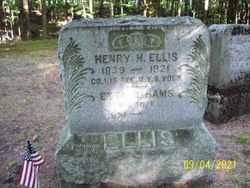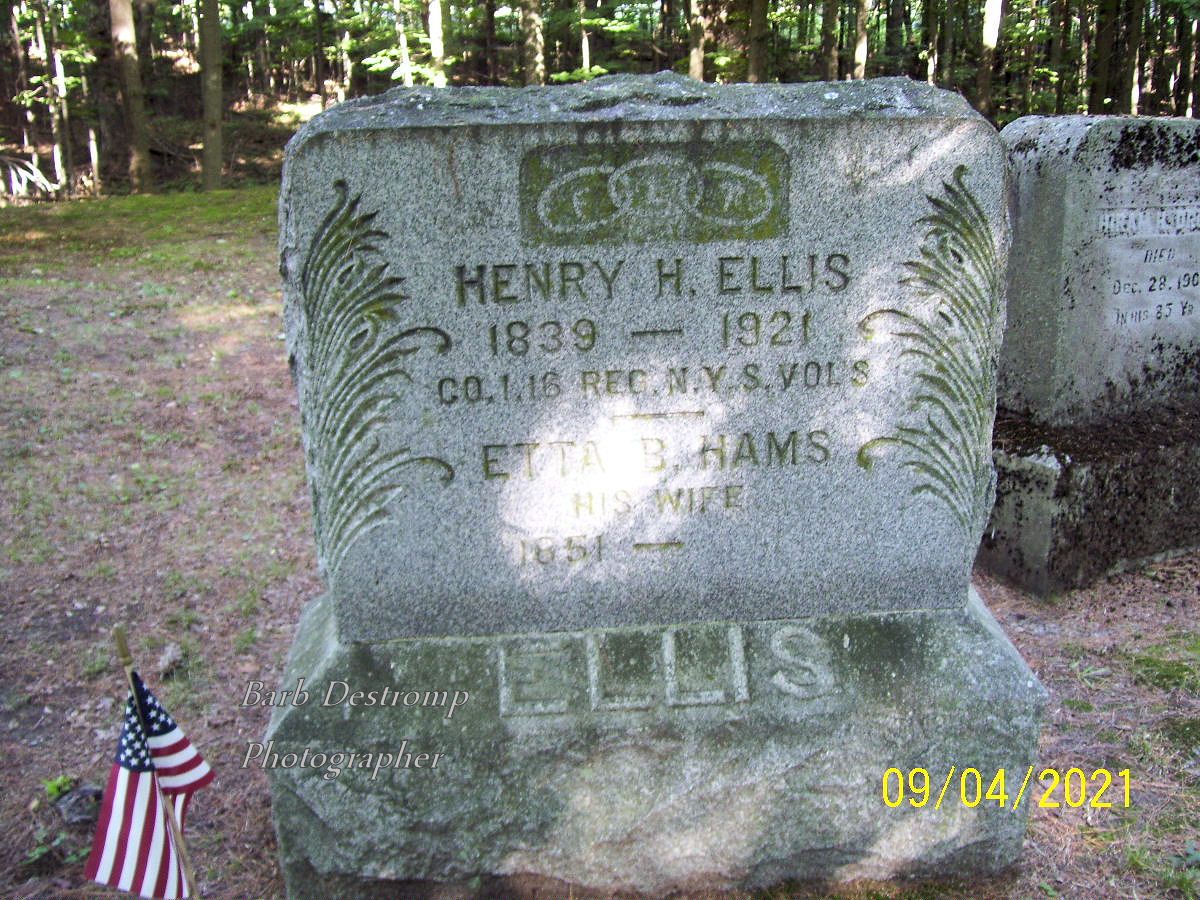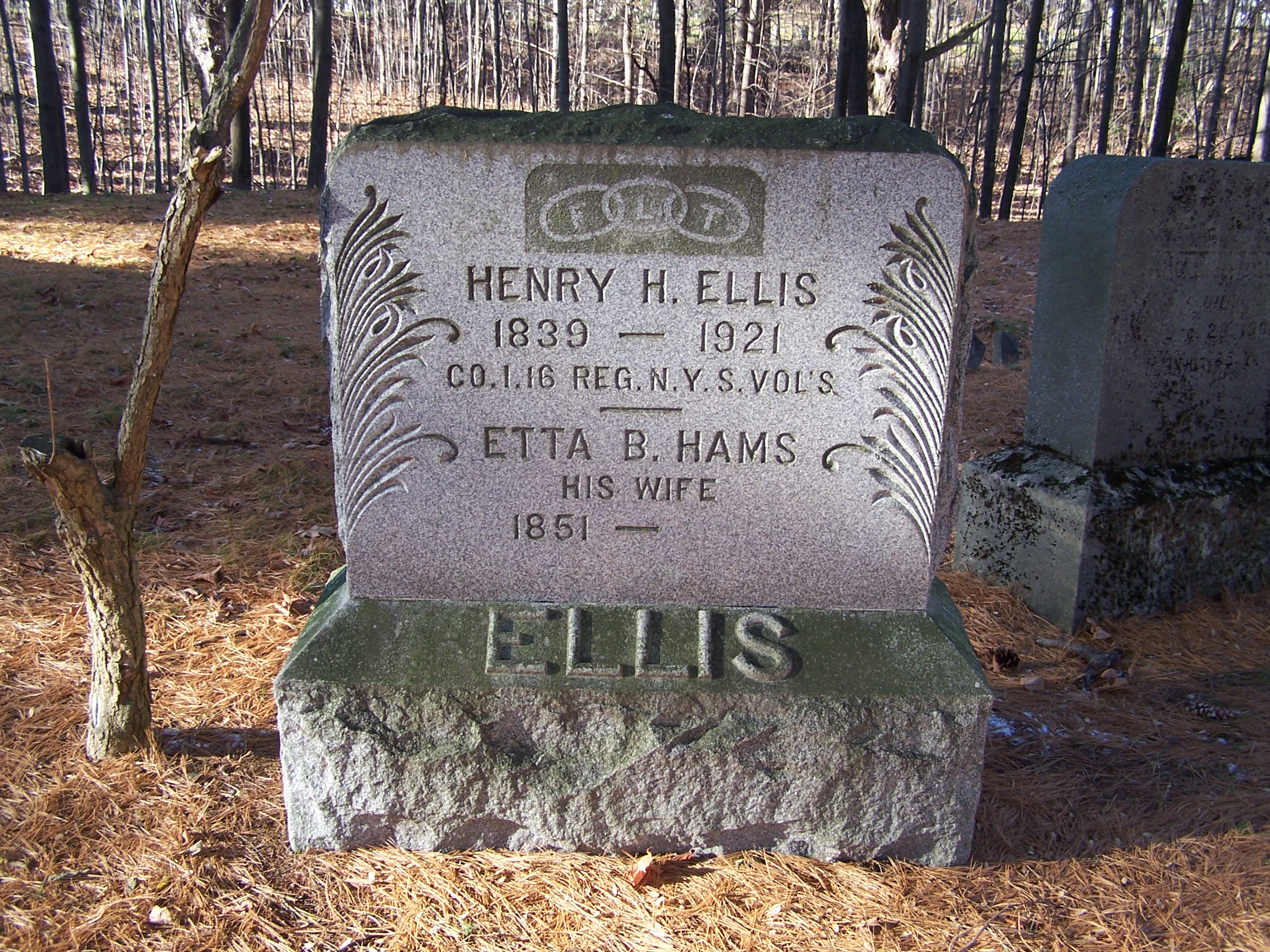"Case 465. — Corporal H. H. Ellis, Co. I, 16th New York, aged 23 years, was wounded in the left knee, at Fredericksburg, May 3, 1863. Five days after the injury he was admitted into Douglas Hospital, Washington, whence the following history was received: "On examining the wound it was found that a conical ball had fractured the patella so extensively as to involve the joint. On May 13th, there were symptoms of synovitis, and the thigh was amputated at the lower third, by the circular method, by Acting Assistant Surgeon J. E. Smith. Portions of clothing were removed from the amputated knee, and an examination showed that the patella had been broken into numerous fragments, that a fissure extended through the inner cartilaginous face of the bone, and that synovitis had been developed. The patient was broken down with diarrhoea. The stump was dressed with alcohol, and stimulants, quinine, and nutrients were given as largely as possible. The general condition of the patient was so unfavorable that no effort at repair was perceptible in the stump for many days. On May 20th, a haemorrhage of several ounces occurred and was controlled by pressure. During the following night the bleeding recurred so freely as to render a ligation of the femoral artery necessary, which was performed below the profunda on May 21st. The patient was so prostrated from the loss of blood that he almost died from the effects of the ether. The most careful administration of whiskey, ammonia, valerian, and morphia alone sustained his life during the next forty-eight hours. There was no recurrence of haemorrhage after the ligation, nor did this ligature of the main artery produce the slightest perceptible effect upon the appearance of the stump. The usual changes were resorted to in the various astringents given for the diarrhoea, nitrate of silver, opium, tannin, and sulphuric acid, all proving at first beneficial and then losing their effect. Lemon juice was given, as the patient's stomach would bear it, with evident benefit as an antiscorbutic. For weeks the patient hung between life and death. His whole thigh was much swollen and very tender on pressure; the incisions were healthy in appearance, the discharge moderate, and the granulations very tedious. Under a careful treatment he gradually grew stronger, his diarrhoea ceased, and the stump, though yet greatly swollen, became closed excepting at the inner extremity, where the end of the femur protruded, the flaps from the first having been insufficient. On August 9th, Dr. Smith was ordered to remove the exfoliating end of the bone, which was loose, and, to his surprise, proved to be a very extensive sequestrum ten inches in length. Considerable haemorrhage supervened, but after the operation convalescence was very rapid, and the stump, no shorter than before, soon closed entirely, being firm and in every way satisfactory. A formation of new bone could be plainly felt in it. The patient regained his flesh and strength, and left the hospital October 26, 1863, his term of service having expired May 22d." The history, with the sequestrum, represented in Fig. 1 of PLATE LXIX, opposite p. 224, and the bones of the amputated knee, were contributed to the Museum by Assistant Surgeon W. Thomson, U. S. A., in charge of Douglas Hospital. A ligamentous preparation of the latter specimen constitutes No. 1852 of the Surgical Section. The patient was subsequently an inmate of the Post Hospital at Albany, and afterwards entered Central Park Hospital, New York City, to be fitted with an artificial limb by Dr. E. D. Hudson. He left for his home June 6, 1864. His pension was paid June 4, 1879." -- The Medical and Surgical History of the War of the Rebellion. Part III, Volume II. (3rd Surgical volume) by U.S. Army Surgeon General's Office.
"Case 465. — Corporal H. H. Ellis, Co. I, 16th New York, aged 23 years, was wounded in the left knee, at Fredericksburg, May 3, 1863. Five days after the injury he was admitted into Douglas Hospital, Washington, whence the following history was received: "On examining the wound it was found that a conical ball had fractured the patella so extensively as to involve the joint. On May 13th, there were symptoms of synovitis, and the thigh was amputated at the lower third, by the circular method, by Acting Assistant Surgeon J. E. Smith. Portions of clothing were removed from the amputated knee, and an examination showed that the patella had been broken into numerous fragments, that a fissure extended through the inner cartilaginous face of the bone, and that synovitis had been developed. The patient was broken down with diarrhoea. The stump was dressed with alcohol, and stimulants, quinine, and nutrients were given as largely as possible. The general condition of the patient was so unfavorable that no effort at repair was perceptible in the stump for many days. On May 20th, a haemorrhage of several ounces occurred and was controlled by pressure. During the following night the bleeding recurred so freely as to render a ligation of the femoral artery necessary, which was performed below the profunda on May 21st. The patient was so prostrated from the loss of blood that he almost died from the effects of the ether. The most careful administration of whiskey, ammonia, valerian, and morphia alone sustained his life during the next forty-eight hours. There was no recurrence of haemorrhage after the ligation, nor did this ligature of the main artery produce the slightest perceptible effect upon the appearance of the stump. The usual changes were resorted to in the various astringents given for the diarrhoea, nitrate of silver, opium, tannin, and sulphuric acid, all proving at first beneficial and then losing their effect. Lemon juice was given, as the patient's stomach would bear it, with evident benefit as an antiscorbutic. For weeks the patient hung between life and death. His whole thigh was much swollen and very tender on pressure; the incisions were healthy in appearance, the discharge moderate, and the granulations very tedious. Under a careful treatment he gradually grew stronger, his diarrhoea ceased, and the stump, though yet greatly swollen, became closed excepting at the inner extremity, where the end of the femur protruded, the flaps from the first having been insufficient. On August 9th, Dr. Smith was ordered to remove the exfoliating end of the bone, which was loose, and, to his surprise, proved to be a very extensive sequestrum ten inches in length. Considerable haemorrhage supervened, but after the operation convalescence was very rapid, and the stump, no shorter than before, soon closed entirely, being firm and in every way satisfactory. A formation of new bone could be plainly felt in it. The patient regained his flesh and strength, and left the hospital October 26, 1863, his term of service having expired May 22d." The history, with the sequestrum, represented in Fig. 1 of PLATE LXIX, opposite p. 224, and the bones of the amputated knee, were contributed to the Museum by Assistant Surgeon W. Thomson, U. S. A., in charge of Douglas Hospital. A ligamentous preparation of the latter specimen constitutes No. 1852 of the Surgical Section. The patient was subsequently an inmate of the Post Hospital at Albany, and afterwards entered Central Park Hospital, New York City, to be fitted with an artificial limb by Dr. E. D. Hudson. He left for his home June 6, 1864. His pension was paid June 4, 1879." -- The Medical and Surgical History of the War of the Rebellion. Part III, Volume II. (3rd Surgical volume) by U.S. Army Surgeon General's Office.
Family Members
Sponsored by Ancestry
Advertisement
Explore more
Sponsored by Ancestry
Advertisement











